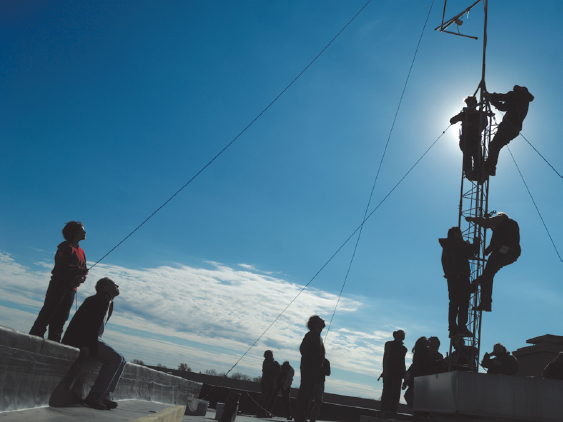Alternative Voices

As large corporations gained control of America’s radio airwaves, activists in hundreds of communities across the United States in the 1990s protested by starting up their own noncommercial “pirate” radio stations capable of broadcasting over a few miles with low-power FM signals of 1 to 10 watts. The NAB and other industry groups pressed to have the pirate broadcasters closed down, citing their illegality and their potential to create interference with existing stations. Between 1995 and 2000, more than five hundred illegal micropower radio stations were shut down. Still, an estimated one hundred to one thousand pirate stations are in operation in the United States, in both large urban areas and small rural towns.
The major complaint of pirate radio station operators was that the FCC had long ago ceased licensing low-power community radio stations. In 2000, the FCC, responding to tens of thousands of inquiries about the development of a new local radio broadcasting service, approved a new noncommercial low-power FM (LPFM) class of 10- and 100-watt stations in order to give voice to local groups lacking access to the public airwaves. LPFM station licensees included mostly religious groups but also high schools, colleges and universities, Native American tribes, labor groups, and museums.
The technical plans for LPFM located the stations in unused frequencies on the FM dial. Still, the NAB and National Public Radio fought to delay and limit the number of LPFM stations, arguing that such stations would cause interference with existing full-power FM stations. Then–FCC chairman William E. Kennard, who fostered the LPFM initiative, responded: “This is about the haves—the broadcast industry—trying to prevent many have-nots—small community and educational organizations—from having just a little piece of the pie. Just a little piece of the airwaves which belong to all of the people.”21 By 2013, about 794 LPFM stations were broadcasting. The passage of the Local Community Radio Act in 2011 created opportunities for more LPFM station applications in 2013. A major advocate of LPFM stations is the Prometheus Radio Project, a nonprofit formed by radio activists in 1998. Prometheus has helped to educate community organizations about low-power radio and has sponsored at least a dozen “barn raisings” to build community stations in places like Hudson, New York; Opelousas, Louisiana; and Woodburn, Oregon.
